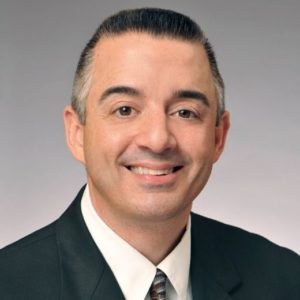Hospitals Must Identify Expenses and Revenues of Implantable Medical Supplies

The Centers for Medicare and Medicaid Services (CMS) published the final FY 2010 Medicare Inpatient Prospective Payment System (IPPS) rules with changes that require separate consideration of Medical Supplies that are implanted and still in the patient at the time of discharge.
Fiscal year 2015 represents approximately the third year where the impact of the breakout of the implantable medical supplies is being used in the IPPS and Outpatient Prospective Payment System (OPPS) relative weights. This timing is consistent with CMS indications that we should expect an approximately 3-year lag between the availability of cost report data and the date that information impacts the IPPS and OPPS relative weights.
This change to the cost report was the first of several initiatives CMS undertook to more accurately identify and match the costs and charges for proper weighting in the IPPS and the OPPS calculations.
For the purposes of the cost reporting instructions, CMS stated that an item would be reported in the new Implantable Devices Charged to Patients cost center if it meets the following criteria:
- If required by the FDA, the device must have received FDA approval or clearance (except for a device that has received an FDA investigational device exemption (IDE) and has been classified as a Category B device by the FDA in accordance with §§405.203 through 405.207 and 405.211 through 405.215 of the regulations) or another appropriate FDA exemption.
- The device is reasonable and necessary for the diagnosis or treatment of an illness or injury or to improve the functioning of a malformed body part (as required by section 1862(a)(1)(A) of the Social Security Act).
- The device is an integral and subordinate part of the service furnished, is used for one patient only, comes in contact with human tissue, is surgically implanted or inserted through a natural or surgically created orifice or surgical incision in the body, and remains in the patient when the patient is discharged from the hospital.
- The device is not any of the following:
- Equipment, an instrument, apparatus, implement, or item of this type for which depreciation and financing expenses are recovered as depreciable assets as defined in Chapter 1 of the Medicare Provider Reimbursement Manual (CMS Pub. 15-1).
- A medical device that is used during a procedure or service and does not remain in the patient when the patient is released from the hospital.
- A material or supply furnished incident to a service (for example, a surgical staple, a suture, customized surgical kit, or clip, other than a radiological site marker).
- Material that may be used to replace human skin (for example, a biological or synthetic material).
In addition, CMS also identified the applicable revenue codes and related cost centers for reporting.
- The following revenue codes should be assigned to the new cost center – Implantable Devices Charged to Patients:
- 275 – Pacemaker
- 276 – Intraocular Lens
- 278 – Other Implants
- 624 – FDA Investigational device (if left in patient)
- The following revenue codes should be assigned to the traditional Medical Supplies Charged to Patients cost center:
- 271 – Non-sterile supplies
- 272 – Sterile supplies
- 273 – Take-home supplies
- 623 – Surgical dressings
- The following revenue codes should assigned to cost centers Durable Medical Equipment – Rented (cost center #66) and Durable Medical Equipment – Sold:
- 274 – Prosthetic/orthotic
- 277 – Oxygen-take-home
CMS added a new distinct cost center for Implantable Devices Charged to Patients for cost reporting periods beginning on or after May 1, 2009.
CMS defined the two medical supply cost centers as follows:
2552-10 Line 71 – Medical Supplies Charged to Patients
-
- – Include the expense of medical supplies charged to patients. This amount is generally not input on Worksheet A, but rather allocated to this cost center on Worksheet B from cost center 14 (central service and supply) based on the recommended statistic of charges requisitioned.
2552-10 Line 72
- – Implantable Devices Charged to Patients Include the expense of implantable devices charged to patients. The types of items includable on this line are high cost implantable devices chargeable and traceable to individual patients. This amount is generally not input on Worksheet A, but rather allocated to this cost center on Worksheet B from cost center 14 (central service and supply) based on the recommended statistic of charges requisitioned.
If you have any questions about the final rule or its clarification, please contact Marc Levy.
Disclaimer of Liability: This publication is intended to provide general information to our clients and friends. It does not constitute accounting, tax, investment, or legal advice; nor is it intended to convey a thorough treatment of the subject matter.



